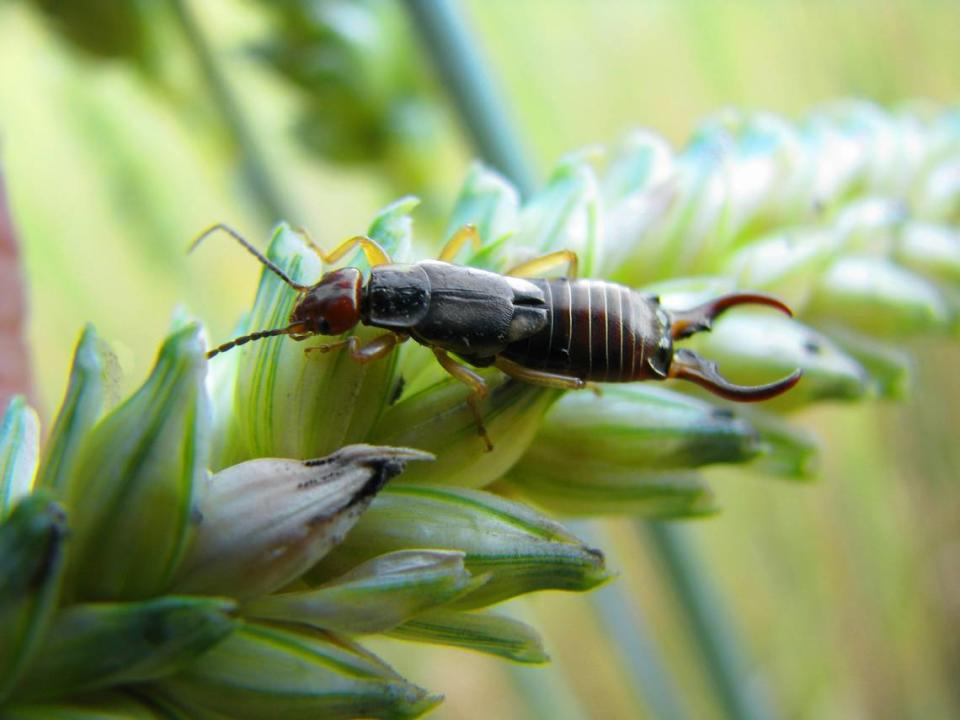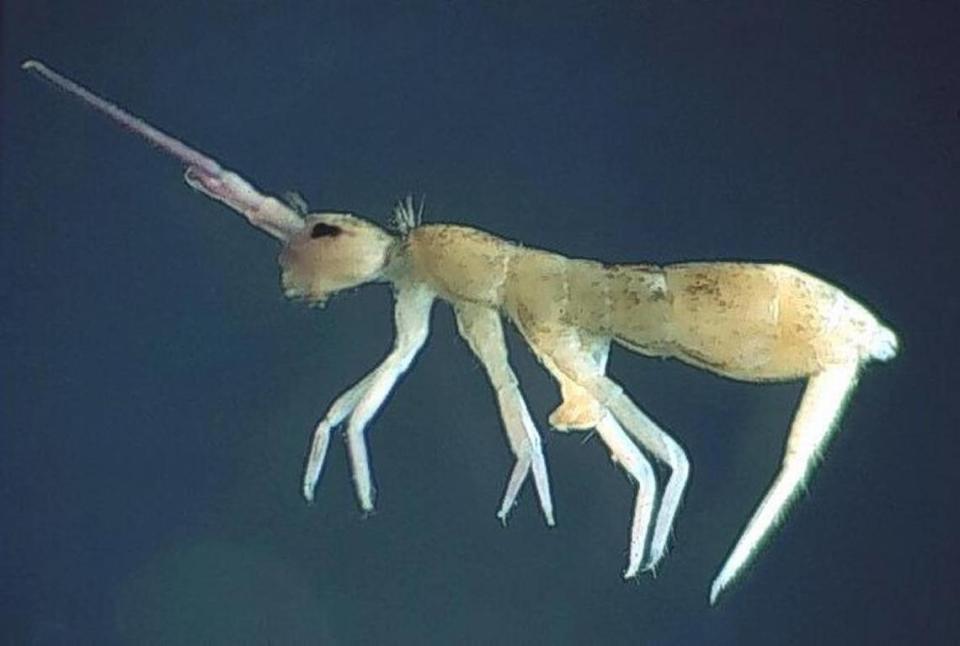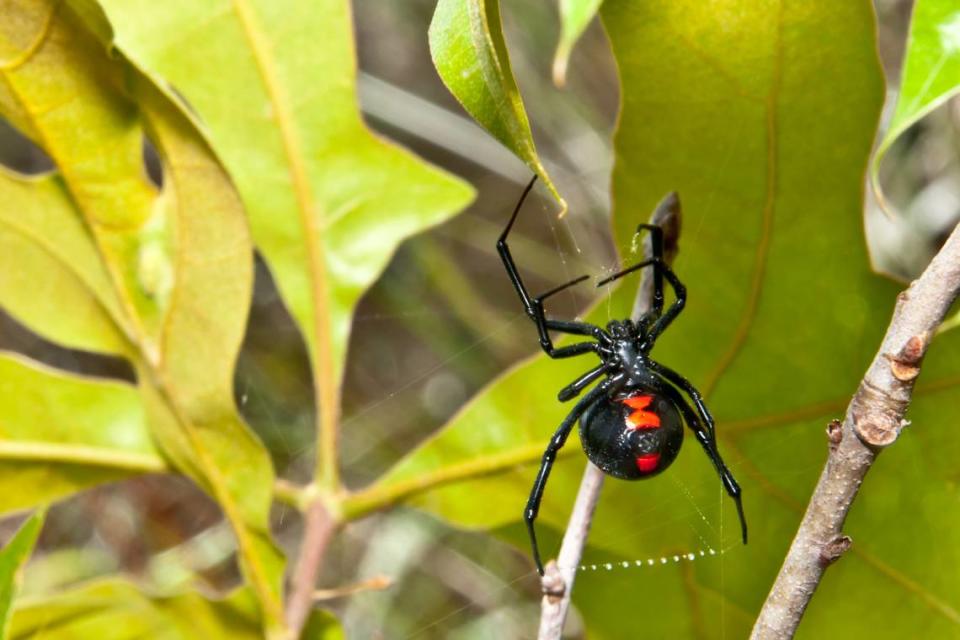Here are 8 common pests you might find in your Northern California home this summer
As the weather warms up, you may start noticing a larger number of pests out in the open, or worse:
In your home.
The biggest misconception, said Manteca-based Next Generation Pest Control owner Stephen Tahija, is that bugs don’t linger through the winter. They do — the creeper crawlers are reproducing during cooler months — it’s just that they stay hidden away, for the most part.
“Insects are cold blooded so they need to regulate their temperature in the summer,” Tahija said. “Water is crucial to their survival and their metabolism speeds up and all those conditions lead to increased insect activity.”
Here are eight common pests you may find in and around your home this summer, and how to keep them away:
Earwigs

Contrary to popular belief, earwigs, or “pincher bugs,” are not named as such because they crawl into people’s ears to lay eggs.
These pests need moisture, so hide under things like foliage, wood and landscape fabric.
“Under things is where you’re gonna find earwigs,” Tahija said. “That’s where they lay their eggs and the babies come from.”
Earwigs will start moving indoors when their moisture area dries out or the board they were nesting in is moved, Tahija said.
Springtails

Springtails are tiny bugs that almost look like fleas, Tahija said. He said if you sit outside near grass, you’ll see them walk around — but they often move indoors.
“I bet you you’ve had them and you didn’t even know it,” Tahija said.
These “nuisance pests,” are found near places like kitchen sinks, leaky toilets, leaky ceilings and baseboards.
Springtails do not bite humans or pets, spread disease or damage furniture. They are mainly a nuisance by their presence, according to University of California Agriculture & Natural Resources.
“What makes them a little bit different is they have an exoskeleton; they absorb moisture through their body,” Tahija said. “If you dry out the area that they’re at, they’re gonna die.”
Gnats, fruit flies and drain flies
While fruit flies, drain flies and gnats may look similar, they are different classifications of bugs, Tahija said.
“Gnats are probably the most misidentified pest there is,” he said. “People call everything ‘gnats.’”
Potted indoor plants that are overwatered attract gnats, Tahija said, because the soil doesn’t dry out since it’s not in the sun. This causes a fungus to grow, which gnats feed on.
The term “fruit flies” may insinuate that these pests are attracted to berries, melon, citrus and other seeded goodies you have in your home, but the tiny insects have a more complex pallet than you may think.
“It could be someone spilled a soda and a little bit rolled under your couch, and you haven’t seen it,” Tahija said.
Drain flies are another mysteriously and suddenly appearing pest. They are attracted to organic matter in — you guessed it — the drains of your sinks.
Generally, people will see what they assume are gnats and bat them away, Tahija said, but seeing these types of bugs indicates an issue somewhere in the house, like fruit lying around.
Bedbugs
Bedbugs are small, reddish-brown bugs that feed on blood but are not necessarily known to spread disease.
A bite from these invasive pests affects each person differently and can range from being unnoticeable to causing a serious allergic reaction, according to the U.S. Centers for Disease Control and Prevention.
They are called transporters because they have to be physically brought into a home, Tahija said. While a bedbug infestation can occur any time of the year, people tend to travel more during the summer, increasing the chances of introducing these pests to your home.
“A bedbug will not walk up to your home and now you have bedbugs in your home,” Tahija said. “It’s not possible.”
If you visit a hotel, movie theater or use public transportation where bedbugs exist, you can transfer them to your home.
Inspecting luggage, furniture and clothing before you bring the items into your home can help prevent an infestation.
Termites
There are two main types of termites, Tahija said: drywood and subterranean.
Subterranean termites nest underground and tunnel up into houses. They’re often found in places that have crawl spaces, Tahija said.
“They’ll go up the pier post straight into the house and they’ll be eating away at the subfloor well before you even know that you have termites,” Tahija said. “The big thing is moisture.”
Drywood termites nest in the wood they are infesting and pull their moisture from wood, Tahija said.
As you prep your summer garden, the CDC advises using decorative wood chips and mulch sparingly, as these products attract termites. The agency recommends using crushed stone or pea gravel instead.
“So when you have moisture in the siding of your house, you may think it’s not a big deal, but that’s absolutely going to attract termites,” Tahija said.
Spiders

Black widows, wolf spiders and garden spiders are common in Northern California. Brown recluse spiders are not common in the area, but are commonly misidentified and cause concern.
Brown recluse spiders have a distinct fiddle shape on their backs and, true to their name, are extremely reclusive arachnids. If you think you’ve seen one on your fence or in your house, you likely haven’t, Tahija said.
“Garden spiders get misidentified as brown recluses every day. It makes it a lot more terrifying than it actually is,” Tahija said. It’s rare for a brown recluse to be spotted this far north — though it could be possible to transport one from another state. The venom is dangerous and can be deadly.
“There are cases that are here but not nearly as much as you would think,” Tahija said.
Garden spiders do little more than look crazy, Tahija said. They “balloon” to get around, and if you’ve ever walked into a seemingly invisible thread of web, it likely was released by a spider moving through the air by way of wind.
Wolf spiders are a broad classification of spiders that contains thousands of species.
Wolf spiders don’t generally make webs and instead go out and hunt their food, Tahija said. They’re common, but generally harmless.
“They’re just out there,” Tahija said. “They’re cool people.”
Black widows also are common in the region and, though it’s rare, the female’s venomous bite can kill a human. Around 2,200 people are bitten by these spiders every year, according to Pennsylvania State University, but no deaths have been reported since the 1980s.
Black widows are notoriously identified by the red hourglass shape on their abdomen.
They spin scaffolding-type webs and wait for bugs to come to them, Tahija said. You’ll see black widows often in areas where there’s an insect presence.
“If you have their food, it’s like being in a restaurant,” Tahija said. “They’re just customers; they’re going to eat.”
How to prevent pests in and around your home
There are a lot of variables to be considered when wanting to reduce insect activity, especially this time of year, Tahija said. He recommended these tips to limit pests:
Get rid of any moisture issues, especially standing water
Unclog your gutters
Maintain dry garbage cans
Cut trees and branches three feet away from your house
Rake up all leaves or foliage around lawns and gardens
Don’t stack things next to your house, especially firewood
Pick up fallen fruit from trees
Pick up after dogs in your yard.
“If you take as much as possible into consideration and plan around those things, you will be much more successful in controlling (pests),” Tahija said.
According to expert reviews, as reported by Study Finds, the best insecticides to combat pest issues are:
Neem oil — a natural pesticide that comes from neem tree seeds and fruit
Ortho Home Defense — a budget-friendly product good for keeping out cockroaches, ants and spiders
Diatomaceous Earth (food grade) — a natural pesticide safe for indoors
Monterey Garden Insect Spray — classified as organic, can be sprayed on fruit and vegetable plants that can attract pests.
Peppermint oil deters a variety of pests and can be mixed with a 1:4 ratio with rubbing alcohol, witch hazel or white vinegar and sprayed near entry points of a home to prevent pests from coming in.
What do you want to know about life in Modesto? Ask our service journalism team your top-of-mind questions in the module below or email servicejournalists@modbee.com.

